Hibiscus will grow best when they receive bright sunlight, well-drained but moist soil, warm temperature, and humidity. So, it is important to choose the right place if you want your Hibiscus to thrive.
Generally, you can keep Hibiscus outdoors in warm and humid weather. But, it is not a good idea to keep them outdoors during the winters. For growing Hibiscus outdoors in the ground, find a place having bright sunlight all day with some afternoon shade and well-drained soil.
There are many things to consider while deciding on the placement of Hibiscus plants. This guide can help you understand where you can keep and grow your Hibiscus.
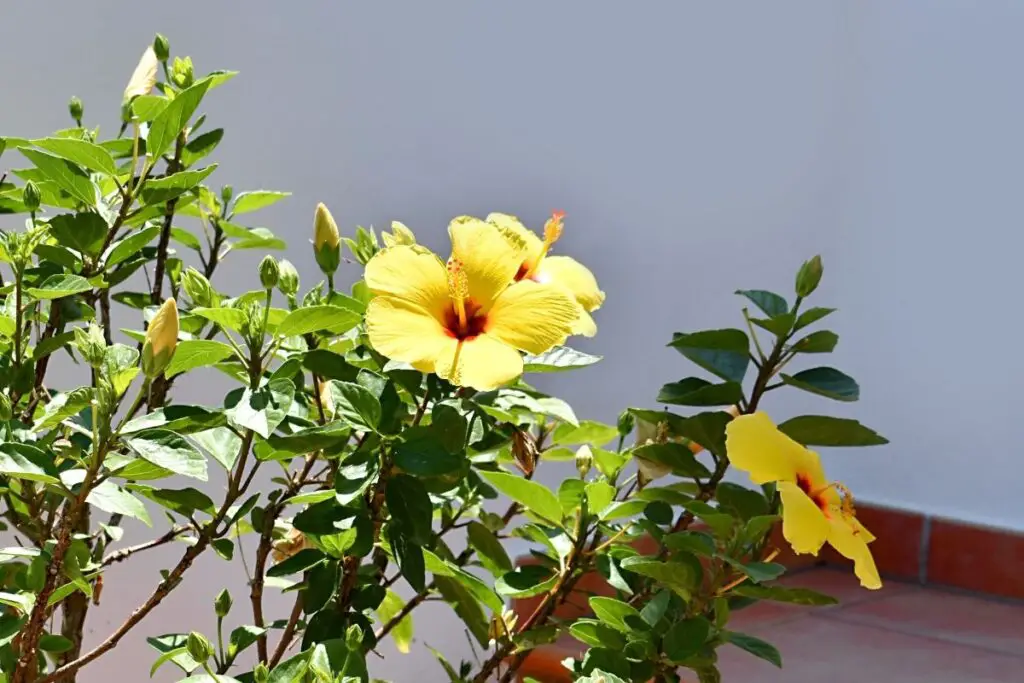
What factors determine the placement of Hibiscus plants?
While deciding the right place to keep Hibiscus, certain factors need consideration.
After verifying these factors, your Hibiscus will survive and thrive if you keep your Hibiscus in a particular place.
So, let’s take a look at those factors.
The direction of the sunlight
Whether you want to keep them indoors or outdoors, knowing which direction will receive the direct sunlight is essential.
Hibiscus requires 6 to 8 hours of sun per day for good growth and healthy blooms.
If the plant doesn’t receive sufficient sunlight, it will affect the flowering and the plant’s health.
So, if you want to keep them outdoors, make sure that the spot receives 6-8 hours of sunlight daily.
Generally, the southern or western direction will get the maximum sunlight.
So, you can keep or plant your Hibiscus plants in these directions.
However, the direction of maximum sunlight differs depending on the hemispheres.
Instead of analyzing these things, find the sunniest spot and keep the Hibiscus there.
The same goes for indoor plants.
Find the sunniest window and put your Hibiscus at that location.
Soil

If you want to plant Hibiscus in the ground outdoors, you must check the soil drainage.
However, the soil will require amendments if it is too clayey or sandy.
Also, make sure that the soil is not eroded.
If it’s too sandy, amend it by adding perlite, compost, or other organic matters.
If it’s clayey, add sand or gypsum to improve the drainage.
You can also create raised beds to eradicate the accumulation of excess water.
Another thing is essential to consider when it comes to soil.
The roots of the plant grow about 6 inches.
So wherever you grow Hibiscus, make sure that the soil is good in penetration.
The water must reach deep enough to the roots of the plant.
Some trees around the planting site
Though these trees can shade the plant and prevent the sunlight from reaching the soil bed, it is not bad.
These trees can help Hibiscus in many ways.
First, these trees can give some amount of shade in the afternoon during the harsh summers.
Place the Hibiscus near the tall trees so that the shadow falls on the planting site in the afternoon.
Secondly, these tall trees can save the Hibiscus from falling over due to the strong winds.
Thirdly, when the dewdrops from the tall trees drip and fall on the Hibiscus plants, it will increase the humidity level.
It works like misting.
And lastly, these trees around the Hibiscus will trap the humidity around the Hibiscus plants and prevent them from escaping.
Looking for gardening supplies? We have tested 100's of products before recommending them to you guys. Check out our best pick below:
| Image | Gardening Supplies | Best Price? |
|---|---|---|
 Top
Top Top
Top | Raised Garden Bed Kit | Check On Amazon |
 | XLUX Soil Moisture Meter, Plant Water Monitor, Soil Hygrometer Sensor for Gardening, Farming, Indoor and Outdoor Plants, No Batteries Required | No Results |
 Top
Top Top
Top | 82 Pcs Garden Tools Set and Extra Succulent Tools Set | Check On Amazon |
 | Joeys Garden Expandable Garden Hose with 8 Function Hose Nozzle, Lightweight Anti-Kink Flexible Garden Hoses, Extra Strength Fabric with Double Latex Core, (50 FT, Black) | No Results |
 Top
Top Top
Top | Dual Chamber Compost Tumbler | Check On Amazon |
 Top
Top Top
Top | Sunnyglade Plant Stakes | Check On Amazon |
 Top
Top Top
Top | Organic Cold Pressed Neem Seed Oil | Check On Amazon |
 Top
Top Top
Top | Mighty Mint Gallon :-Insect and Pest Control Peppermint Oil | Check On Amazon |
 Top
Top Top
Top | Scotts DiseaseEx Lawn Fungicide | Check On Amazon |
 Top
Top Top
Top | Jacks Classic 20-20-20 All Purpose Fertilizer | Check On Amazon |
 Top
Top Top
Top | 30,000 Seeds Pollinator Attracting Wildflower Mixture | Check On Amazon |
 Top
Top Top
Top | Survival Vegetable Seeds Garden Kit-Over 16,000 Seeds | Check On Amazon |
Indoors or outdoors (+Temperature)
The temperature and humidity of your region will determine the placement of the Hibiscus plants.
If you live in a region that receives frost, you should keep Hibiscus inside when the temperature drops.
Even if you want to grow Hibiscus outdoors for sufficient sunlight, you should grow the plant in containers to take them indoors in winters.
But, if your area gets mild cold and no frost, you can keep Hibiscus outside.
You can put the potted Hibiscus outdoors or even grow the plant directly in the ground.
Growing tropical hibiscus plants, you must keep them indoors, especially in winters.
In the case of hardy Hibiscus, you can keep them outdoors as they can tolerate cold weather more than the tropical varieties.
Which places will be best to keep my Hibiscus?
There are not many good specific locations to share outdoors.
You just need to find a sunny spot and plant them over there.
This is what most people do.
But, there are some places which I think would be best for Hibiscus.
At this point, I will share some ideal places to keep or plant Hibiscus.
A sunny spot in your garden with some shade
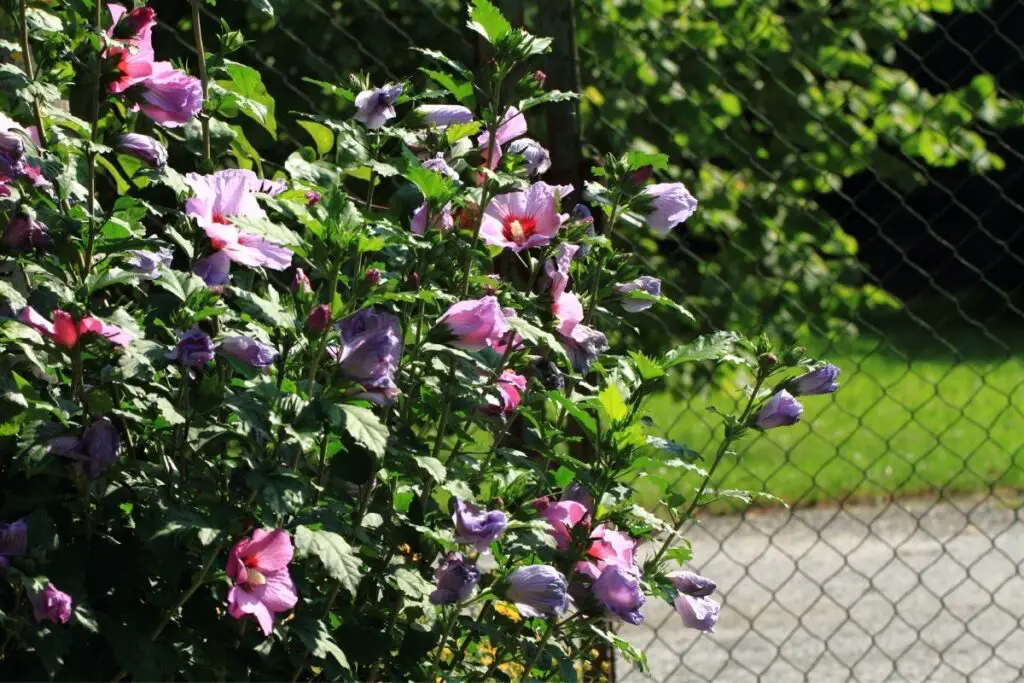
If your garden has one sunny area where the sunlight falls throughout the day, that is the best area to keep or plant the Hibiscus.
It is generally the southern or western direction of your garden.
If the sunny spot you have chosen for your Hibiscus also receives some shade during the afternoon, it is probably the best to put Hibiscus.
The shade will protect your plant from getting sunburnt during the summers.
A place with good soil permeability
If you find a place with sunlight but not well-drained soil, you can amend it by adding ingredients to improve drainage.
If you are planting Hibiscus in the ground, soil permeability is also important, along with light.
Since the roots of Hibiscus can reach up to 6 inches deep, the water you provide them should also reach that much deeper and soak the soil around the plant roots.
If your garden has a place with good sunlight and soil permeability, just plant the Hibiscus in that location without much analysis.
Also, check the pH level.
A pH level between 6.5 and 6.8 is the best for the plant’s optimal growth.
A place with some tall trees at a distance
If your garden has a sunny spot with some trees at a distance, that too is the best place to keep the Hibiscus plants.
The tall trees can provide the plant with shade when the sunlight becomes scorching in summers.
It will also save the plant from sudden strong winds.
Additionally, the dewdrops of the trees falling over the Hibiscus plants can increase the humidity.
And the tall trees will also stop the humidity around the Hibiscus from escaping.
Though it is not vital as there are other ways to adjust humidity, it will be good if your garden has such a location.
Indoors in winters
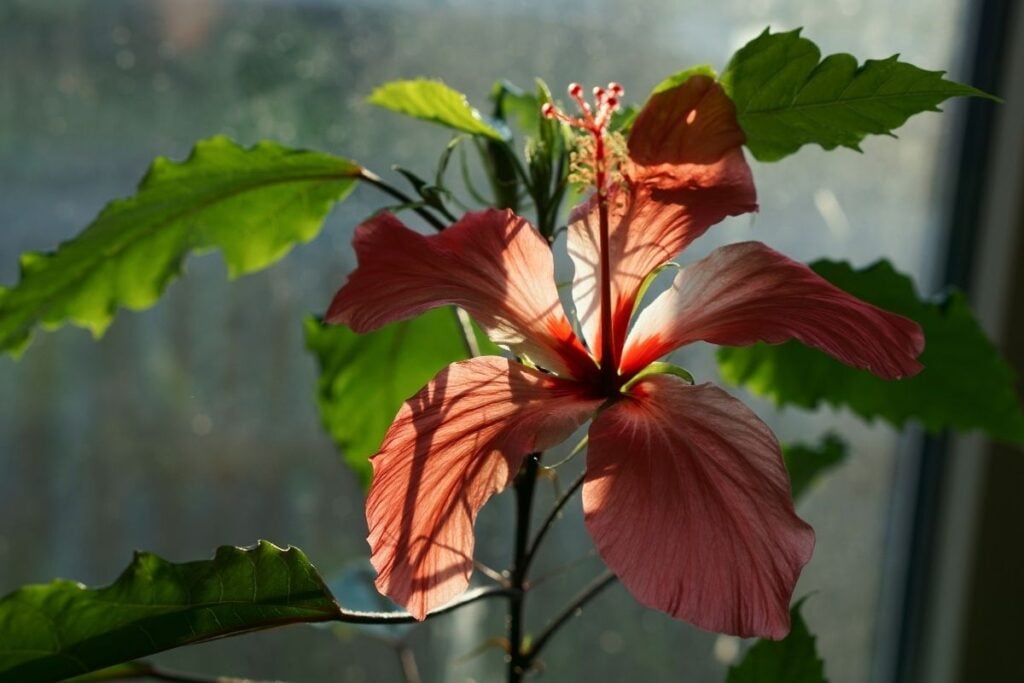
This will be helpful for Hibiscus if your temperature receives too cold in winters.
If your area receives frost in winters and you own tropical Hibiscus, the best place for Hibiscus would be indoors, not outdoors.
Tropical Hibiscus plants are frost-tender plants.
They cannot tolerate temperatures below 32-50°F.
They will die if you keep them outside in winter.
Pet-free zone
If you have pets, you must keep the Hibiscus out of their reach.
Search for a zone in your garden where the pets don’t loiter much.
This will save your pets from getting poisoned, and you will save your plant from destruction.
Although most Hibiscus plants are considered non-toxic, one species named Rose of Sharon is poisonous to pets.
So, you must keep the plant out of their reach.
If impossible, also create a fence around the garden bed.
Away from rooftop and fountains
Spots near these places can splash water and keep the soil bed saturated always.
Though the rooftops drip water constantly in the rains, the fountains will do this all the time.
A constantly saturated soil will make the plant undergo overwatering and root rot.
Though such places can be beneficial in summers because the soil dries out very quickly, it is not good during the winters.
If you plan to keep your Hibiscus in the ground the whole year, these are not good places to plant Hibiscus.
A place away from these things will be a good place for Hibiscus.
Space
While growing Hibiscus, a wide space is very important.
Hibiscus concentrates on growing wider and not taller.
So, if you want to grow multiple Hibiscus plants or some companions, you should choose a wide spot for them.
You have to give them enough space to grow and spread.
Otherwise, the plant will remain small and may become prone to diseases due to a lack of proper air circulation.
Additionally, the space between the plants should also be a concern.
Maintain a distance of at least 2-3 feet between the plants.
The northern or eastern side of your garden
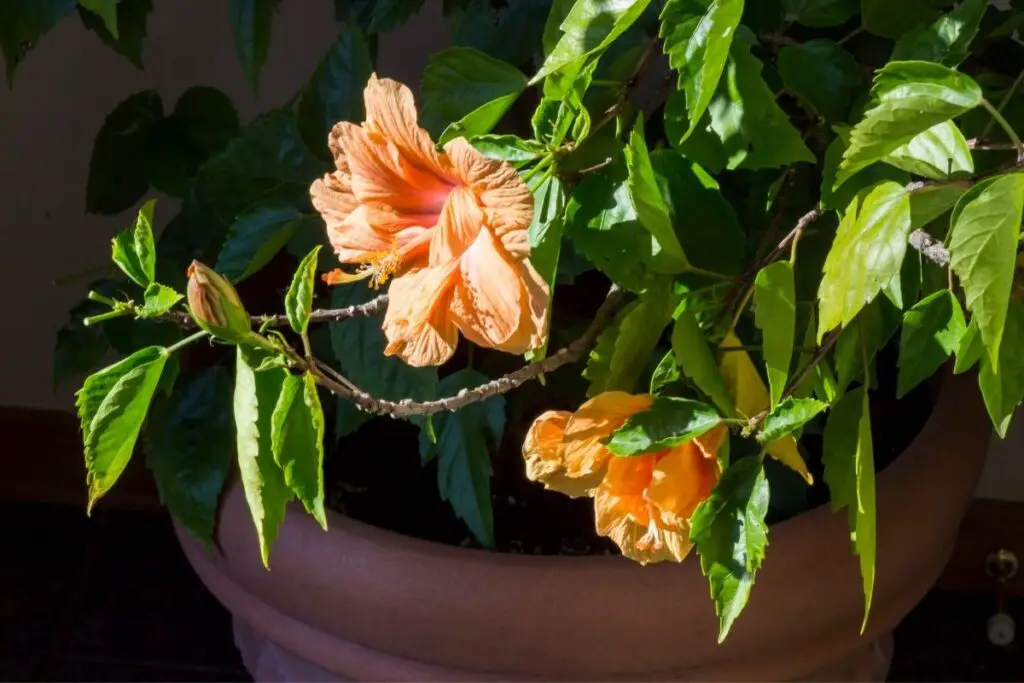
The plant might suffer due to light in the Northern or Eastern direction.
The northern side receives the least sun if you belong to the northern hemisphere.
However, it is good to be from the southern hemisphere as it will give maximum light.
The sunlight fades from the eastern side as the day progresses.
But the good point is the plant can still receive direct sunlight in the morning.
Hibiscus will grow well if they get 2-3 hours of sunlight and 6 to 8 of filtered light.
So, planting them in the eastern direction will let them have adequate light and bring luck to you and your family.
It will also spread positivity around your house.
Indoor placements
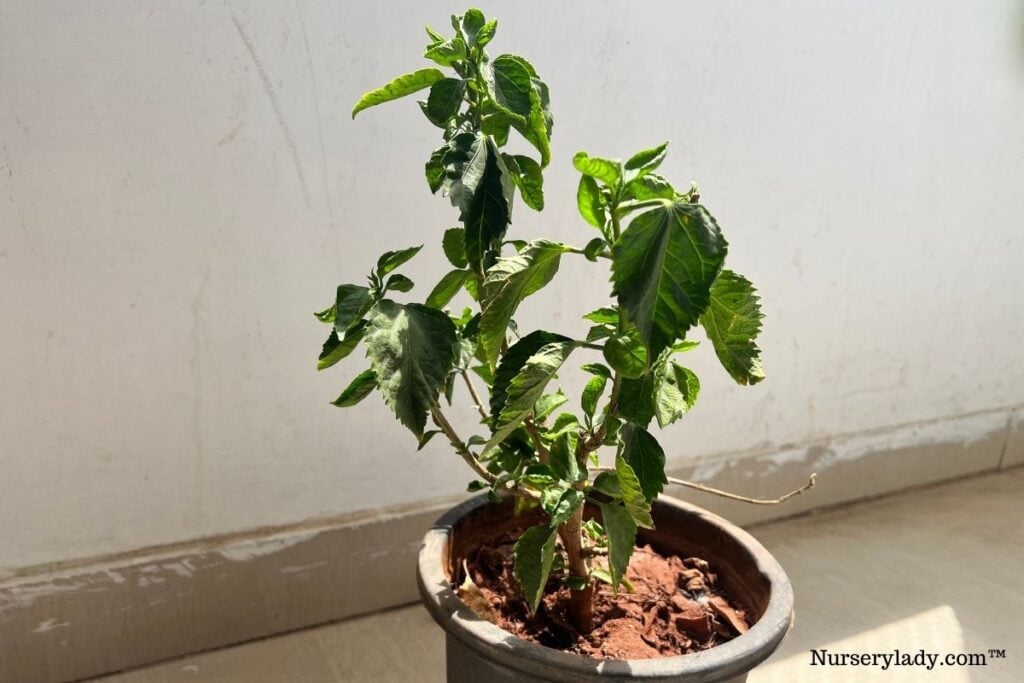
Generally, Hibiscus is grown outdoors as they enjoy full sun.
But, Hibiscus is also grown indoors nowadays as showy houseplants.
There are many other reasons for growing them as houseplants which I will share along with the ideal spots.
Here are some good indoor spots:
- The sunny window will be best, especially the south or west-facing window. You can put on curtains if the summer heat harms them.
- A place where the pets or children won’t reach is good for Hibiscus, especially if you have Rose of Sharon. This one species is considered toxic to pets.
- A room that receives temperatures around 65 to 75°F. If the plant receives this temperature the whole year, you can even see them growing in winters.
- A room with high humidity, around 50% to 70%, is the best room for these tropical plants.
- The eastern side of your house will be good for these plants. It will bring good fortune to you and your family.
- You can place them in your bedroom, drawing room or study room. They support lifting spirit and mood, absorbing sound waves, and releasing more oxygen. It also gives an insulating effect and makes the rooms warmer and cool in summer. You can have a relaxing day and a peaceful sleep.
Final words
It is not a difficult job to find the best location for Hibiscus. If you are familiar with their requirements, you can easily find the right location.
A perfect location includes adequate sunlight, well-drained soil with correct pH and good permeability, warm temperature, high humidity, and a pet-free zone.
You can keep them both indoors and outdoors. It mainly depends on the zone you belong to and the temperature your region gets at different seasons.
Along with these, it would be better if you could also consider the points of good fortune, air purification, mood-lifting, and positivity.
Reference: Wikipedia, ASPCA, Louisiana State University Agricultural Center, American Society for Horticultural Science, Tropical Hibiscus by Texas A&M University, Sciencedirect.
